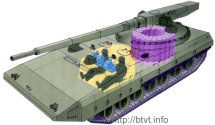They aren't as relatively restricted as people tend to think.Heavy MBTs are suitable for neither mountainous terrain, beaches, nor jungles. Heavy MBTs also tend to have a much larger logistical footprint, which isn't ideal if your ground forces require transport via sea or air.
Most of warfare ultimately happens along human life, and humans at large don't live in mountain monasteries. We live along infrastructure, and when such infrastructure doesn't support heavily equipment at wartime - units are equipped to deal with it.
Korean war, as well as ground fighting of the Pacific war, shown that heavier armor=better. If one opponent neglected armor (Korea, Malaya), blitzkriegs happened.
All sides brought whatever they had at hand.
It's one thing to limit weight of tank meant to keep up with lighter units; it's very different when we talk about the opponent.
Previous Korean war wasn't decided by Korean armies, despite DPRK one being very good. It was good, massive better than Southern one. It didn't get to finish it's job, and at large didn't even survive till the end of 1950.
Army in this case is a contingency plan, "what if". DPRK is North Korean ally, South Korea has US units. And, on the opposite, there's need to keep a good force, just to (1) have South/US(which train non-stop for an invasion) it in mind, as well as keep it in Pyongyang (I wonder we really want massive nuclear warfare a few hundred miles from Beijing, which will be happily brought over by summer winds).
=there's an always present nascent risk to end up fighting against Ks and Abrams.
Last edited:

